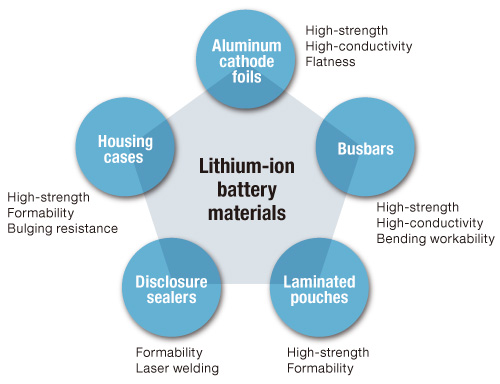
The rise in the demand of lithium ion battery (LIB) materials has made scientists to focus on enhancing operating temperature, energy density, charging time, durability, output power and the cost
of LIB technology. At present, several advanced materials have been incorporated into cathode (positive electrode) and anode (negative electrode), while extensive research continues to identify
other promising materials.
Understanding Cathode Li ion Battery Materials
A typical LIB's cathode is made from two materials: Lithium Cobalt Oxide (LiCoO2) and Lithium ion manganese oxide (LiMn2O4). The batteries based on cobalt have a pseudo tetrahedral morphology, allowing them to diffuse Li-ions two-dimensionally (2D). These are ideal because
of their low-self discharge rate, high volumetric capacity, high heat capacity and exceptional cycling performance. However, low thermal stability and high cost can be a limitation.
On the other hand, cathodes derived from manganese have a cubic lattice system, leading to three dimensional (3D) diffusion of li-ions. These turn out to be attractive li ion battery materials
because they are cheaper and can be used for creating more lasting and efficient batteries. But, even they have their limitations too such as the tendency to dissolve in the electrolyte during a
cycle (leading to poor cycle).
Know More About High Quality Li-ion Battery Materials For Anode
Traditionally, the anode is constructed from materials such as graphite or other promising allotropes of carbon. However, in recent times, silicon based high-quality li-ion battery materials have been discovered
to create nanowire batteries. These are commonly used because they are capable of intercalating li-ions for storing electrical charge in a modest volume. What makes carbon popular is its
excellent performance and low voltage.
For anode, low-voltage materials remain to be the key, as otherwise excess capacity would be of no use as per energy density.
When buying materials for LIBs, carefully examine cathode and anode materials, as only compatible materials can lead to successful results.